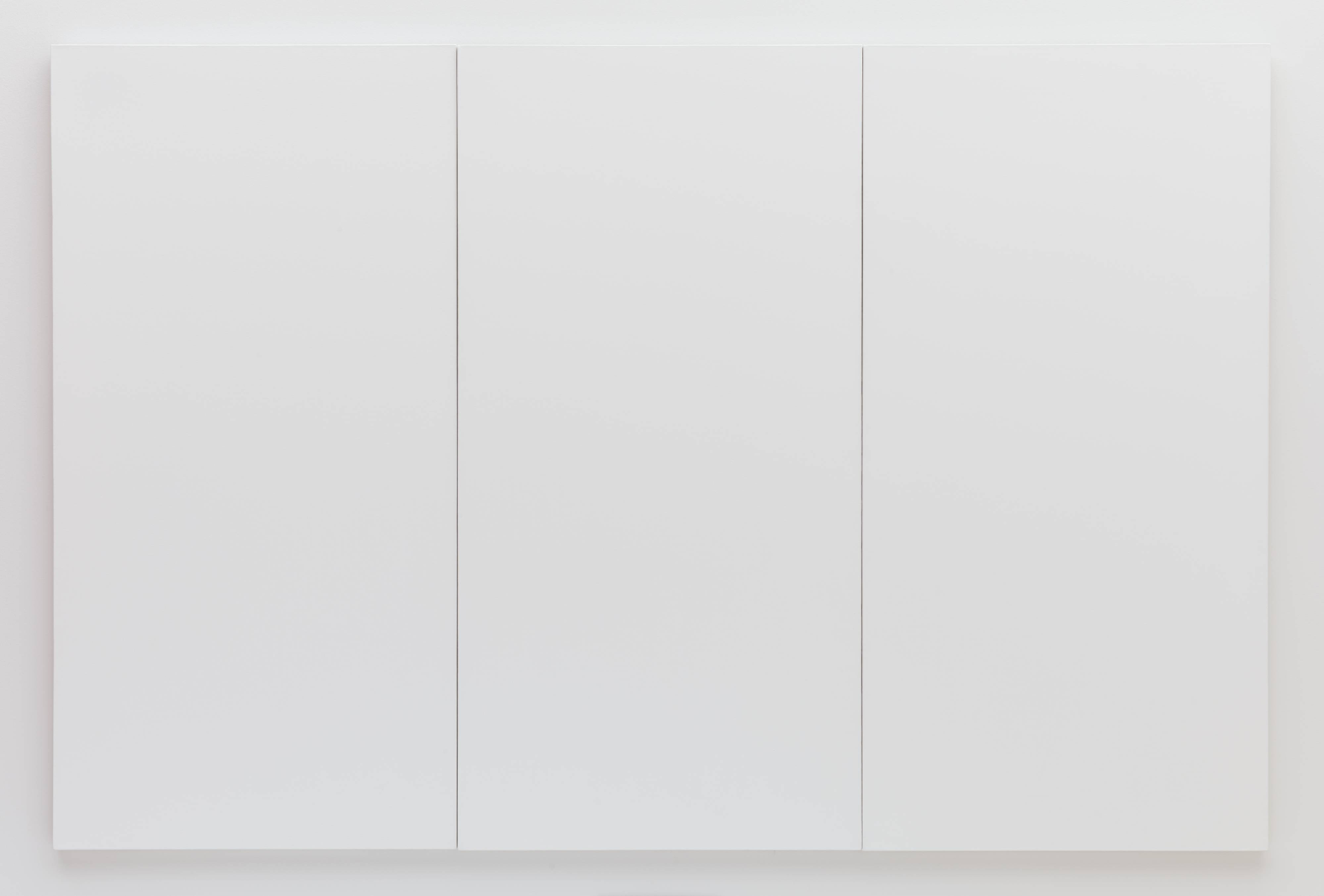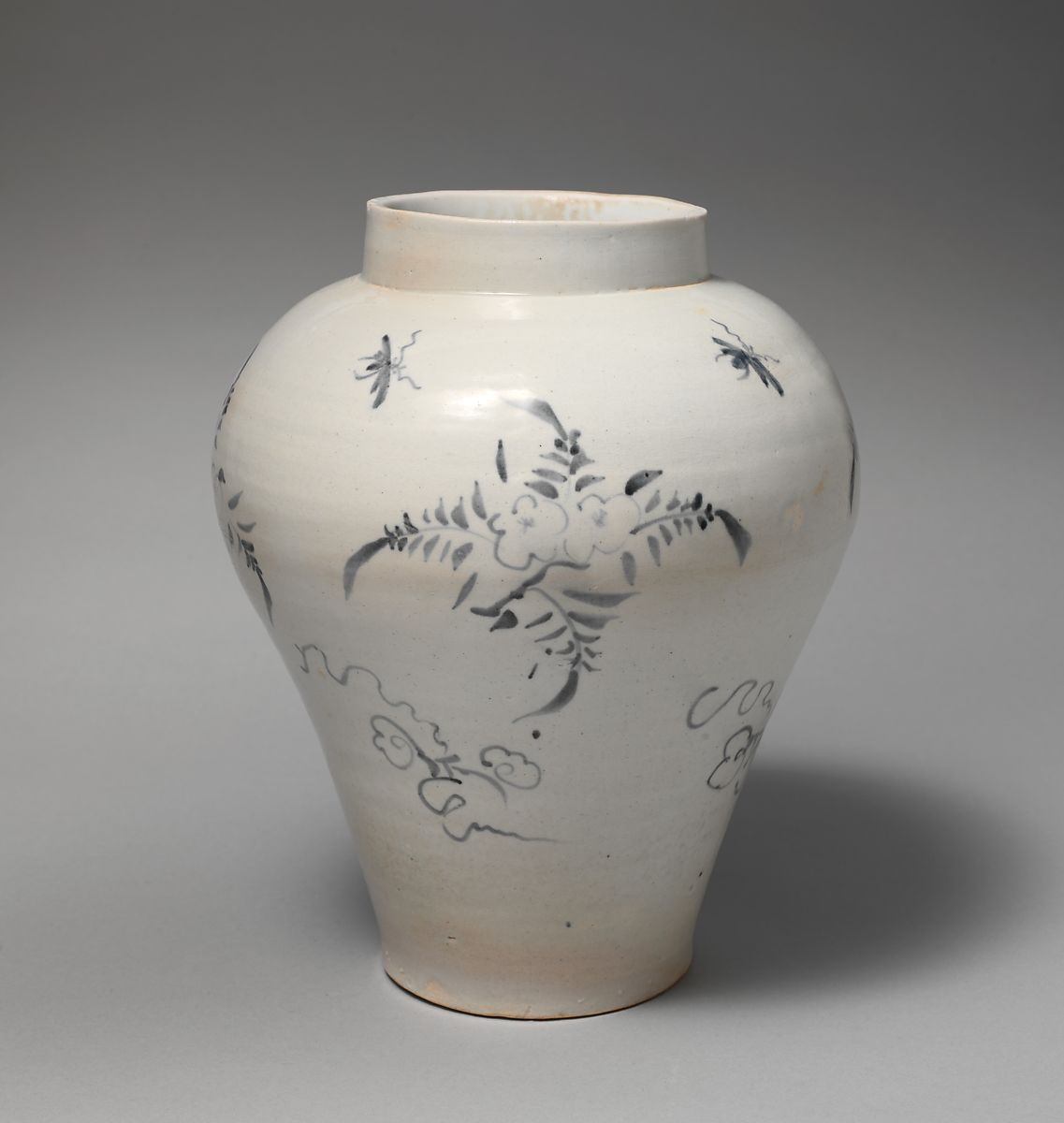“For Park, ‘painting’ is ‘erasing’; on the contrary, ‘erasing’ is again ‘painting’. The acts of painting the painting, or erasing the painting, filling and emptying came to be Park’s life.”
— Soukyoun Lee
The vanguard of the 1970s South Korean artistic concept of Dansaekhwa, literally translating to “Monochrome Painting”, Park Seo-Bo is one of the leading figures in contemporary Korean art, his career spanning decades, and infatuating audiences all over the world. Best known for his enthralling monochromatic paintings from his Ecriture series commencing in the mid-1960s, this present work, Ecriture No. 15 is a significant painting to come to auction, created during an important time in the artist’s career shortly after his participation in the pioneering show, Five Korean Artists: Five Kinds of White at the Tokyo Gallery in 1975.
The first international display of Dansaekhwa, Park’s work was presented alongside works by Kwon Young-woo, Lee Dong Youb, Heu Hwang and Suh Seung-won, effectively launching the artist’s career to new dizzying heights, and establishing his global reputation. Born in 1931 in Yecheon, Gyeongbuk, Park was greatly affected by the Korean War (1950-53) and the division of the country into North and South, and his work is intrinsically linked to “Koreaness”. Indeed, the artist is recognised as a founding member of the Korean abstract aesthetic that formed as a response to the desire for cultural rebuilding in the post-war, post-colonial context.
“White has long been traditionally associated with the Korean people. It has been not only the representative colour of our traditional aesthetic sensibility, but also a symbol of our spiritual bearing...In short, white has been more than that [which] it manifests. In other words, it is something spiritual to us before it is a colour. White represents to us a small cosmos before it assumes a colour.”— Lee Yil
Influenced by the trauma of the war years, and the search for identity in the following decades, Dansaekhwa arose as a distinctly Korean form of art, instilling traditional Asian aesthetics with a new life. Different to Western examples of post-war art that tended to focus on destruction, artists in Korea responded with a strong desire to rebuild and re-imagine their national and cultural identity, following their colonisation by Japan and the traumatic period of the Korean War which divided the nation in two. Distinctly meditative in its approach, Dansaekhwa drew upon modes of abstraction and minimalism, adopting the colour white as a means to establish a distinct “Koreaness”, a blank space on which to assign new meaning and evoke an unmistakable spirituality.
Indeed, Dr. Yoon Jin Sup, leading scholar on the movement of Dansaekhwa, describes the term as embodying art that is, ‘devoted to the process of repetition and specificity of material based on meditative nature, which is the opposite of Western Minimalism and monochrome’s rationality and logic’. Moreover, while the large-scale monochrome paintings typical of Dansaekhwa have attracted comparisons to post-war monochromatic movements of the West, as embodied, for example, by Robert Rauschenberg’s White Paintings, works such as Ecriture No. 15 are unique in their Korean essence, and particular context in which Park and fellow Korean artists were working.

“When I aimlessly and endlessly repeat drawing these lines, I realise that I am emptying myself in a similar way as a monk who chants and beats on his moktak [a wooden percussion instrument]. I believe this is the right way for me to approach art, as a Korean who believes the Eastern philosophy that human and nature is one.”
— Park Seo-Bo
Park Seo-Bo started his signature series, Ecriture, in the mid-1960s, having undergone a sort of spiritual awakening after his encounter with the writings of the ancient Chinese philosophers and writers, Laozi and Zhuang Zhou, underpinning the philosophical aspect of this seminal body of work. Ecriture, as a result of his turn towards Eastern philosophy, is distinctly lighter than his earlier works inspired by art informel, as seen in his Primordialis series from the early 1960s.
Indeed, the meditative quality of his Ecriture works such as Ecriture No. 15 stem from his interest in Taoist and Buddhist philosophy, while referencing aspects of calligraphy through the constant movement and deft, unbreaking line. Meaning “writing” in French, Park’s Ecriture works harmoniously fuse the practices of calligraphy and writing with painting, using a pencil to draw patterns into the still-wet white surface of the canvas. As seen in Ecriture No. 15, Park creates a beautiful ivory surface of ceaseless spirals, blending into one another in the formation of a transcendent, holistic image. These helix forms are also reminiscent of the curved symbols of the Western cursive handwriting found in France, perhaps the influence of his time spent in Paris in his mid-thirties when participating in the UNESCO International Young Painters exhibition in 1961 where he remained for a year, and the 3rd Paris Biennial in 1963.
In this way, Park becomes both calligrapher and painter, fusing a traditional Eastern practice with the medium of oil paint, typically conceived as a Western art form. The off-white of Ecriture No. 15 is also evocative of porcelain from the Chosŏn dynasty (1392-1920), again emblematic of his synthesis of Korean tradition with new ideas. Further, Park blends tradition and the past with aspects of modernity, looking to abstraction in the creation of a new, fresh Korean aesthetic. As pencil and paint merge harmoniously into one, the artist too becomes one with his work.

“Park took a pencil, repeatedly drawing lines of a particular length. The pencil drawing upon the still wet canvas creates a factor between the tracks where the lines are drawn and the paint that touches those lines creating an inner design echoed throughout the painting.”
— Oh Kwang-Su
With his work becoming synonymous with Korean contemporary art, Park Seo-Bo is a pioneering artist whose impact on the world will be felt for generations to come. Success and recognition came relatively quickly for Park, chosen to represent Korea at the 3rd Paris Biennale in 1963 and the 8th and 13th São Paulo Biennales in 1965 and 1975. Park has since exhibited his work in a multitude of prominent institutions across the globe, including, Korea: The Trend for the past 20 Years of Contemporary Arts at the National Museum of Contemporary Art, Seoul in 1978; Working With Nature - Traditional Thought in Contemporary Art from Korea at Tate Gallery Liverpool in 1992; and Transcendence: Modernity and Beyond in Korean Art at Singapore Art Museum, Singapore.
His works are in several significant collections, including the Guggenheim Museums in New York and Abu Dhabi; The Museum of Modern Art, New York; The Art Institute of Chicago, Chicago; M+, Hong Kong; and The National Museum of Modern and Contemporary Art, Korea. Significantly, in 2019, Galerie Perrotin, Paris held the solo show, Ecriture, featuring works from the artists seminal series, having previously been shown around the world, in New York, Hong Kong and Daejeon.
This year, White Cube held an impressive solo exhibition for the artist at their Bermondsey, London location, running from 17 March to 1 May 2021.